The Letort Regulars used to meet for Sunday morning breakfasts, or for picnics at Charlie Fox’s place on the Letort spring creek, in Carlisle, Pennsylvania. * Vince Marinaro and others would stay over at Charlie’s fishing hut, which he built on his property even before he built himself a house to live in.

It was in that hut that they had a fly tying kit , donated by one Bob McCafferty, and their meetings, experiments and trials drew the attention of visitors like Lefty Kreh, George La Branche, ER Hewitt and Joe Brooks.
This band of fishermen, which included the likes of Ed Shenk, Gene Utech, Tommy Thomas, Ross Trimmer and others, were ground breakers. Their home water was what is still described as one of the most difficult trout streams in the world.
Stories abound about how spooky the fish are, and how clear the water is. The banks are sodden marshes in many places, the whole stream is only 9 miles long, and the fish are apparently all but impossible. Online searches reveal much evidence of these difficulties expounded in recent times. But reading Vince Marinaro’s “A Modern Dry Fly Code” (written in 1950) reveals that not much has changed in this respect. Marinaro humbly paints a picture of himself as a duffer, saying things like ”This stream has always been a difficult one for me to solve and for many others too. The capture of one good trout in an evening’s fly-fishing was quite an achievement” and “….the usual result in these cases is a violent reaction on my part intended to be a strike, something I fervently wish I had never learned, and the matter is concluded by a sudden parting”.
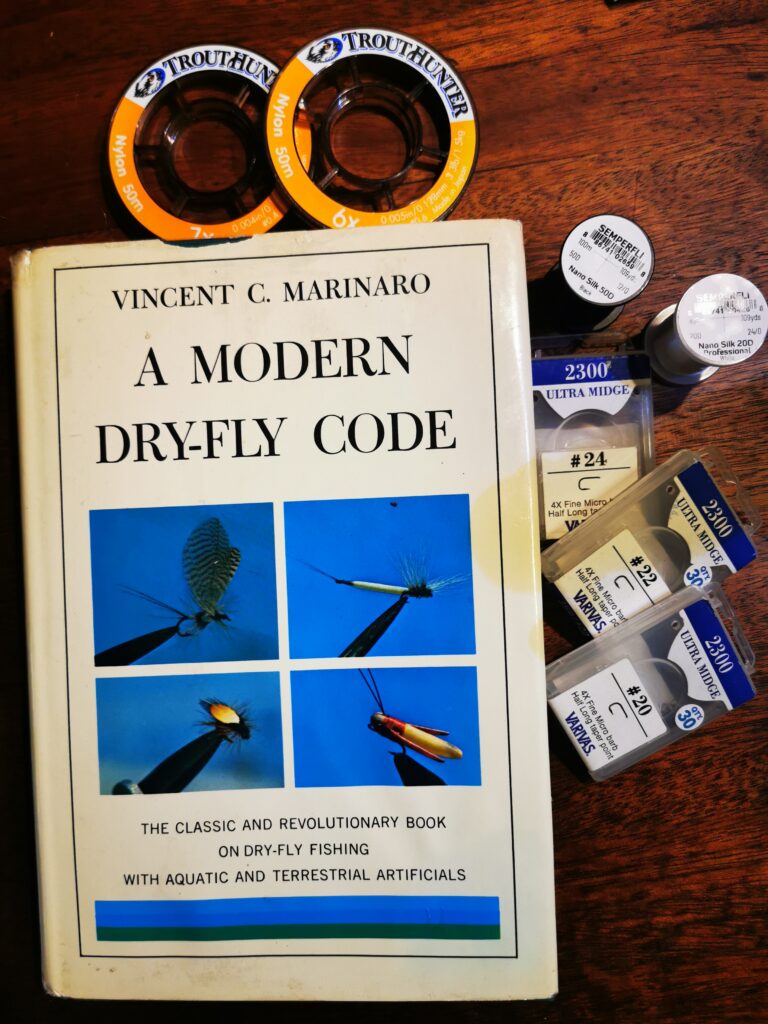
As a relatively slow flowing limestone creek (AKA Spring Creek, chalk stream, Limestoner), its trout have all the time in the world to inspect what the fly fisherman has to offer, as well as a remarkable abundance of food besides. These characteristics make the stream a veritable university of fly fishing technique. Puzzles and riddles needed to be solved there, because although early fly anglers could see the trout, they couldn’t catch them.
What makes this interesting, is that the likes of the Letort Regulars had other streams they could go to, where the trout were easier, but they didn’t. That is to say that they chose not to abandon this near impossible challenge in favour of easier waters. They fished other waters, for sure, but their identity as “The Regulars” formed around the most difficult stream in the Cumberland Valley, the one of which Marinaro said: “the Letort is a hard task master and does not treat lightly any violation of dry fly technique”.
This challenge saw them entertaining the mother of invention: necessity. If they wanted to work out the puzzle, they had to get serious about it, study the trout and the insects and learn by trial and error. And so a great “university” was borne.
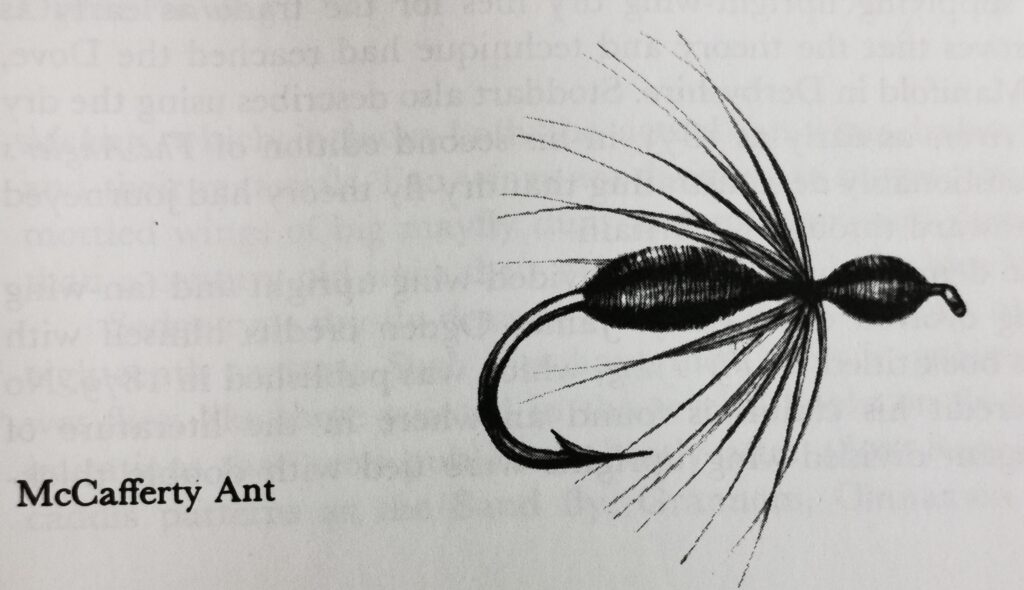
I haven’t had the pleasure of reading Ed Shenk’s books, and I am sure there are many other enlightening ones besides that I am not aware of, but I have devoured books by Mike Lawson, Ernest Schwiebert, Darryl Martin and Vince Marinaro.
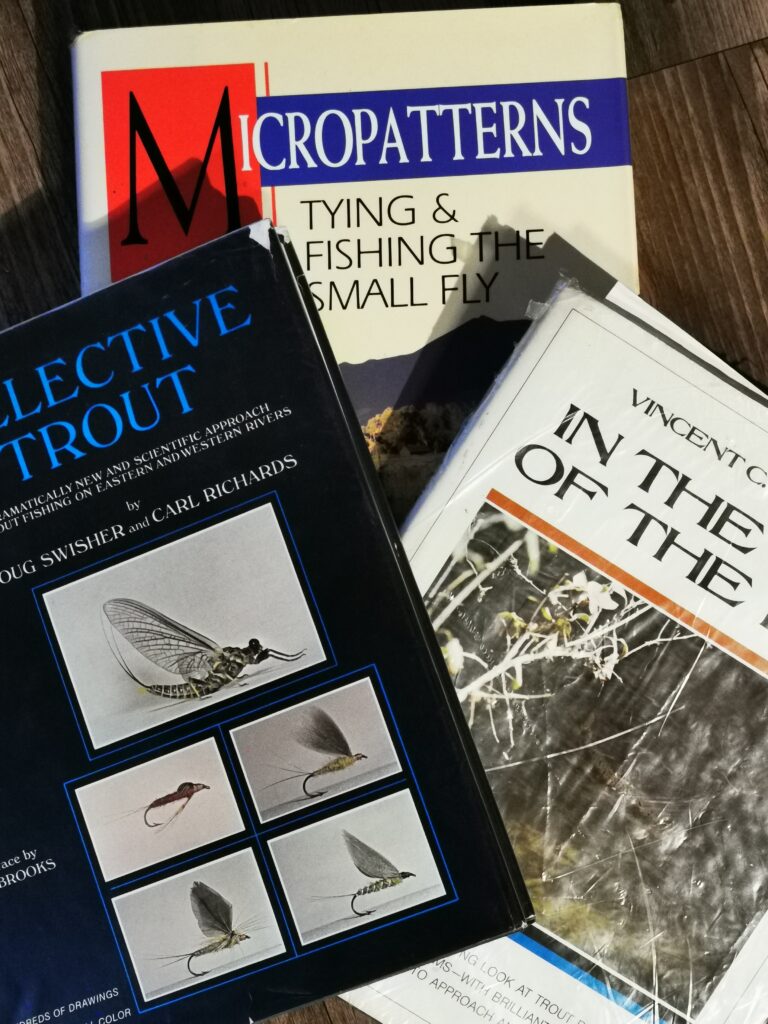
These articulate writings of a bygone era reveal a level of enquiry, dedication, observation, and let me say obsession, which is rare nowadays. A Google search will reveal tidbits, videos and anecdotes, and people who are quick to boast that they knew the Letort Regulars, but like me, they don’t add to the body of knowledge of flyfishing technique.
The discoveries of the Letort regulars were significant. They pushed the boundaries. They looked for the smallest hooks and finest tippets they could find and tied flies on them, and tried to land big fish on them. They spoke and wrote with deference to Halford and Gordon, but then gently introduced the flyfishing world to the new frontier of terrestrials. They pushed back frontiers. In the 1970 edition of “The Code” which I own, Marinaro writes with wry amusement about how he meets anglers out on he stream who offer him their tiny flies, complete with words of instruction and encouragement, oblivious to the fact that it was he who started the whole thing.
It is also interesting to read on modern forums, how the benches, stream improvements, access paths , footbridges, and passages across the streamside bogs are all gone. Quite apart from the fact that a highway bridge now crosses the river where Fox’s hut once stood, the attentions of this dedicated band of fishermen are seemingly a thing of the past. How strange that is!
Consider for a moment, that when the likes of Charlie Fox fished the Letort, it was probably not as famous as it is now. At that stage it did not have attached to it the history of some of the great personalities of flyfishing, and neither was it described as the birthplace of modern terrestrial imitation, as it now is. And yet, despite its ordinariness, it received the loving attention of these pioneers. That would be attention both in respect of hours spend studying its trout and how to master them, and also hours spent with spade and saw, making it into something great. Now in the glow of its fame, there is little evidence that any of this still takes place.
Instead there are some brass plaques, and there are those who claim to have known the men who made it great. There are also stories about how difficult it is to access the neglected sections, and there are dreadful stories of fish kills and pollution.
One forum commentator enlightens his colleagues as to the names of various stretches, pools and meadows, presumably because these exist only in the memories of ones like him, who witnessed the Letort in its halcyon days.
(I must hasten to add that I have never visited the stream – I wish I could- and that my conclusions are based on desk-bound research, but I can find no evidence that refutes what I claim here)
This whole state of affairs puzzles me. Notwithstanding the burgeoning and ever pressing demands of the human population, the fact that an iconic and revered stream lies unkempt and at least in part, neglected, is an irony. So many other places have been killed by too much attention: turned to theme parks with gift shops and tourist centres, but this one, like many trout streams I read of, suffers neglect instead. I suppose I have to be careful what I wish for, but could I perhaps put in a request for something in between? I mean, could one of the people who revels in the nostalgia of the greats, not round up his buddies and go cut a path and lay a boardwalk to one of the pools? Maybe these fellows actually have it waxed. Maybe they fish there three times a week, meet in secret, and keep their wonderful exploits off the internet. That would be great I guess, and from thousands of miles away I may never know, but nothing leads me to suspect that this is the case.
Turning for a moment to the observations, and technical developments of the Letort Regulars: Has anyone seen Marinaro’s assertions on the body colours of the spinner vs the dun espoused, refuted, or even discussed since the 1990’s? It is quite possible that I am missing something, and that in fact these technical issues have been built upon since that era of great flyfishing books. But my mates and I just throw Para RAB’s. I know: Our particular streams are fast freestone waters, and fish will bite Humpies and DDD’s, so maybe the Letort/Marinaro model doesn’t apply here, and maybe modernisations of his work are widely applied elsewhere..
But, we do have some slower sections of river. Late last season a friend and I were foxed by some fussy trout in a series of slow pools.
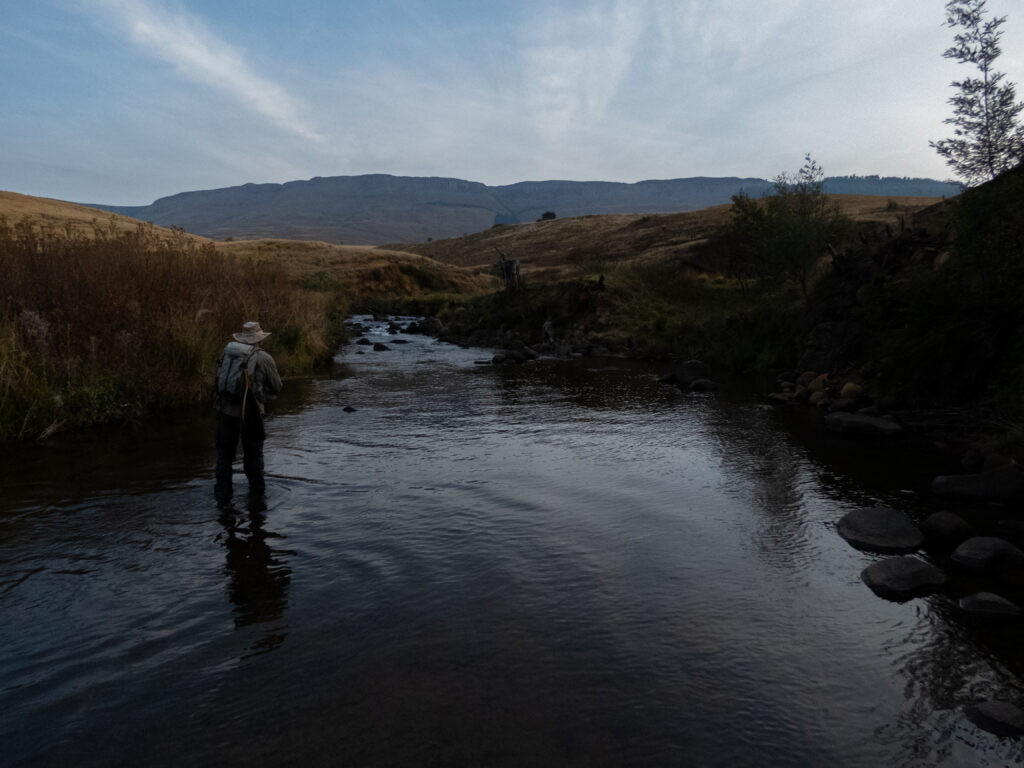
Our frantic changing from a para RAB to a beetle to a CDC emerger simply didn’t work, and our conscious repertoire didn’t extend to significantly different solutions. We concluded that we were fishing one of the most difficult trout streams around, and I for one would have been happy with just one trout that evening. I can’t help thinking that Marinaro, if he was watching, would have labelled us as guys who “Stomped the banks and flailed the water”. And I can’t help thinking that all of us fly anglers have gone just a little bit backward. Our enquiries extend to scant viewings of Instagram pictures, and the odd YouTube video in which the tattoos and the brand of fly rod are the main feature. We don’t meet at the riverside to inspect the insects and discuss the finer points of the hatch, and life is too busy for a fisherman’s breakfast every Sunday.
We recently lost Lefty Kreh and Ed Shenk.
There might have been a code once, but I think its broken.
Additional Reading:
‘ * Errata. I am grateful to John Fiorini who had this to add in respect of the “Letort Regulars”:
The term “Letort Regulars” is capable of a couple of meanings. A loose group that adopted the name (and of which I was a member) was formed in the late 70’s and met for dinner at a local restaurant on the first Fri. of each month, with a picnic in August on benches at the “Nineteenth Hole” on the river behind Charlie Fox’s house. (That is also where an ad hoc gathering of locals often held a “prayer breakfast” on Sun. mornings.) Charlie was a regular attendee at our “meetings”, but Shenk and Marinaro were not. The latter-day Regulars sort of faded away in, I think, in the early 90’s.
Several others also forwarded me pictures of the cloth badge of the Regulars
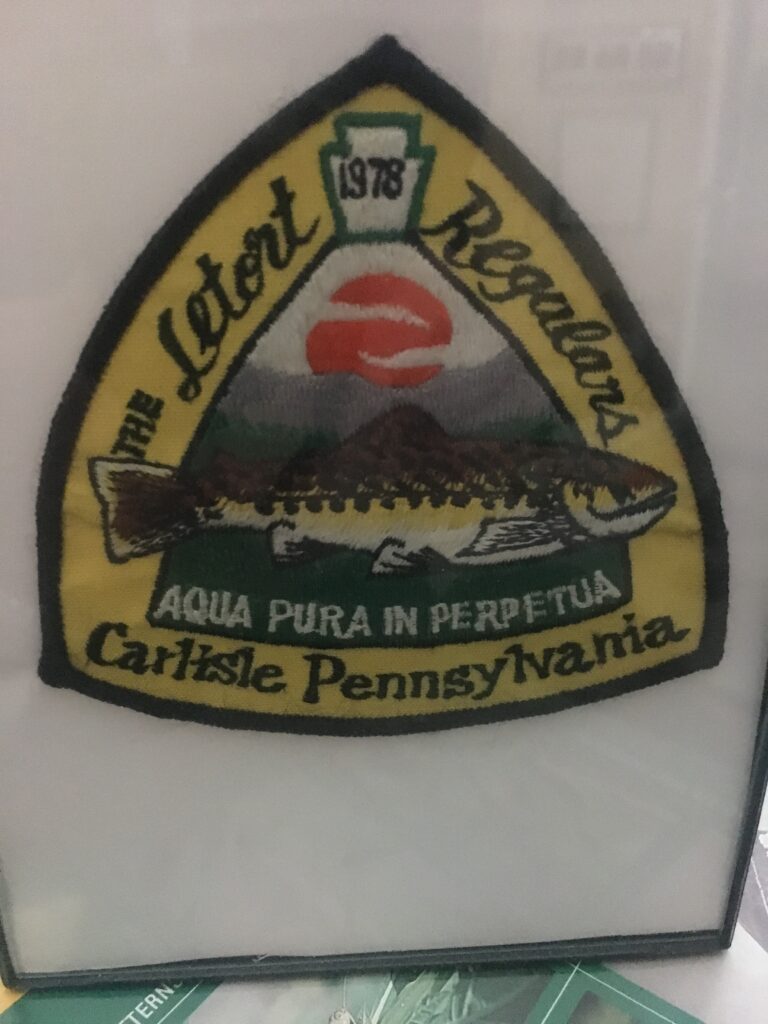
And in respect of the conservation of the river, John adds:
I don’t live in the Carlisle area and haven’t followed the recent status of the Letort carefully, but I know that both the city and the Central PA Conservatory have done a lot of rehab work on the river.
And Eric Richard added:
A letter written by Charlie Fox at the group’s inception was titled Super Trout in reference to the Loch Leven strain of Brown Trout. The Loch Leven was the mover. Defined by it’s movement and recognized by these anglers for their value they met to propagate and manage these misunderstood fish. A federal fish hatchery biologist dismissed them with the assumption that all brown trout were crossed. You should be happy to know that while standing on the shoulders of C. Fox a grassroots movement of anglers in PA successfully petitioned for the protection of the Letort’s breeding population during the post spawn when they are feeding in the downstream watershed.
This particularly interested me, because my home river here in South Africa was once on record (and forgive me, but for the time being I forget where the reference comes from , except that I know it is quoted by Duncan Brown in one of his books), as that containing the most pure genetic population of Loch Leven Browns in the world. Sadly I know that this is no longer the case, but a few of us keep pictures of our Browns from the river, and compare notes and are looking to see the degree to which the later introduced European browns remain in evidence, interbreed, or perhaps reduce in number as the supposedly now adapted Loch Leven’s hold sway.
9 Responses
Excellent meditation, true historically, with questions for the present time that beg for answers or continued research.
Lovely, interesting and thought-making reading over my early morning coffee. Many thanks. Tom
Thank you Tom
An interesting musing, and perhaps more true than we would wish. Perhaps it is simply that the driving force, as you suggest, is that necessity is indeed the mother of invention and that many waters are not demanding of the level of finesse discussed by these gentlemen. However there are streams which do demand more of us and there are other species, such as grunter, where the debates rage and innovation is fervent. Perhaps the code isn’t broken but has moved to new challenges. That said, fishing well on an “easy” water is still effective and fishing poorly on a challenging one is not. I suspect that we all rise to the level demanded of us.
Good points Tim…..I find myself leaning towards trying to fish well on difficult (and less popular) waters, and enjoying developing the finesses required.
I’ve fished the Letort once 2 years ago.
The comments are accurate.
The old mailbox is still standing but the rest is gone, plaques and hut by the plaques excepted.
Thanks for the comment Gary. Good to get the low-down from someone who has fished it.
Great years keep up the information. Dave wolfe. A letort regular
Thank you David.